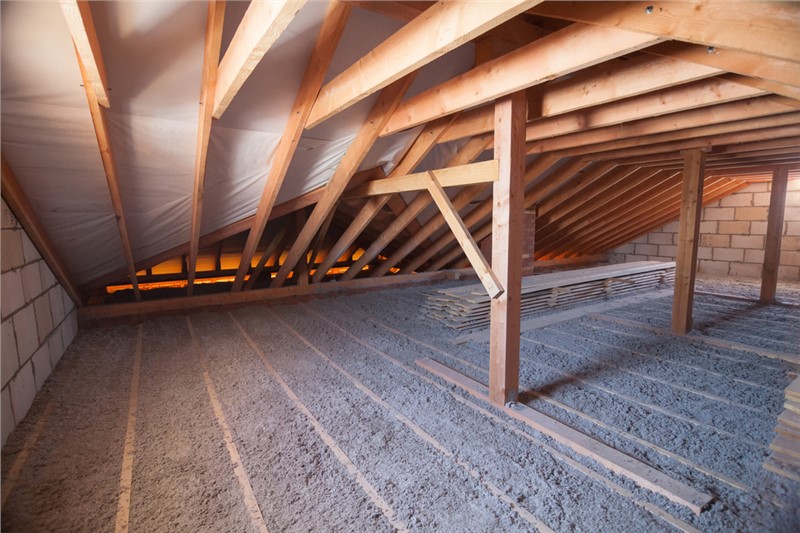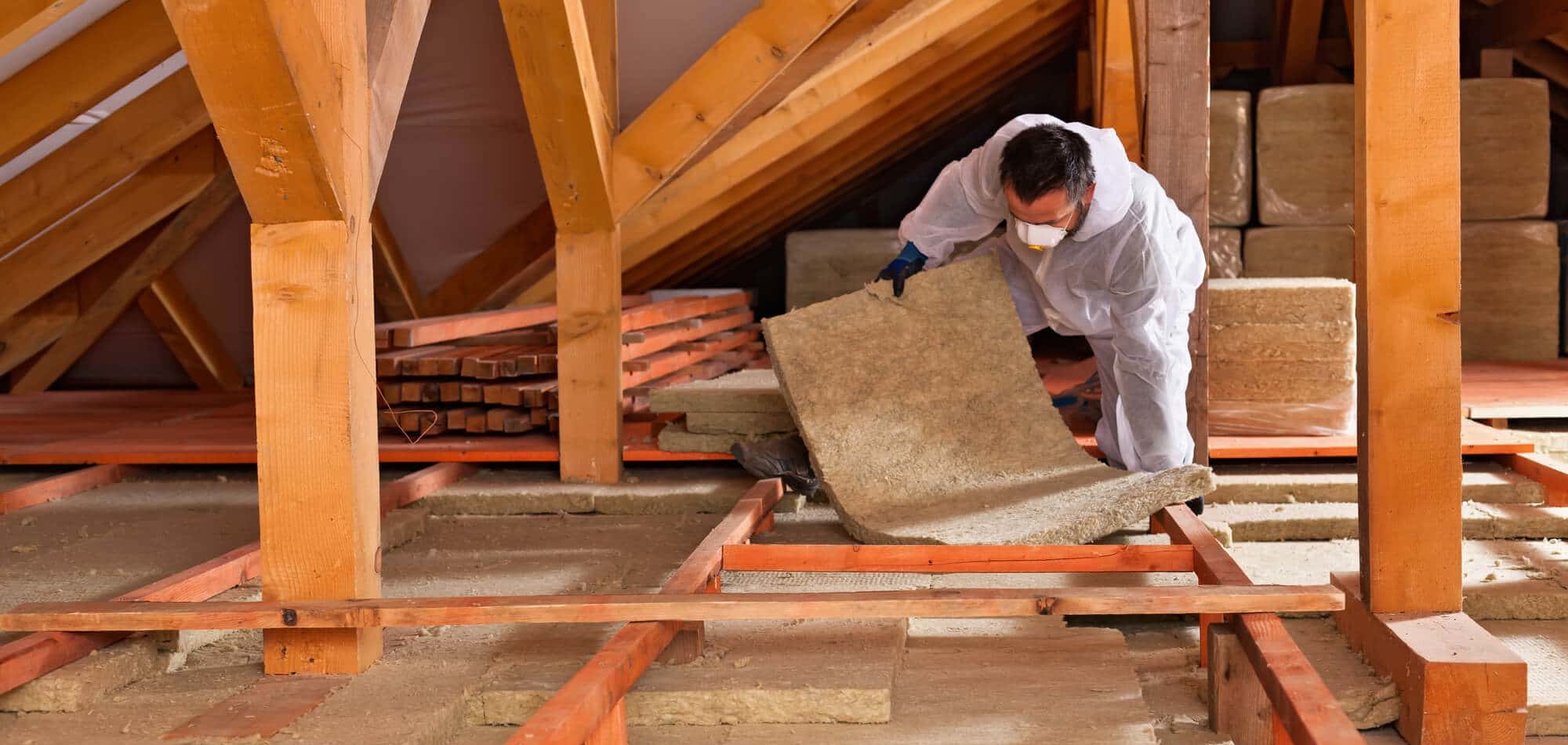Discover the Various Types of Attic Insulation and Their One-of-a-kind Benefits for Your Home's Energy Performance

Fiberglass Insulation
Fiberglass insulation is just one of the most generally utilized products for attic insulation as a result of its superb thermal performance and cost-effectiveness. Made up of tiny glass fibers, this product successfully traps air, producing an insulating obstacle that aids preserve consistent interior temperature levels. Its high R-value per inch makes it particularly efficient at resisting heat transfer, which is critical for energy conservation in homes.
Setup of fiberglass insulation is fairly uncomplicated, usually available in batts or loose-fill forms, fitting different attic room arrangements. Additionally, it is non-combustible and resistant to wetness, lowering the risk of mold development. This sturdiness adds to its long life, making fiberglass a sensible long-term financial investment for homeowners.
Moreover, fiberglass insulation is frequently manufactured from recycled materials, which enhances its eco-friendliness. The product can additionally contribute to soundproofing, decreasing noise transfer between rooms. While it is important to put on protective equipment during installment to avoid irritation from the fibers, the overall benefits of fiberglass insulation, including energy savings and ecological factors to consider, make it a preferred option for enhancing attic room efficiency and advertising a comfortable living setting.
Spray Foam Insulation
Spray foam insulation is a highly reliable choice for attic room insulation, understood for its premium air securing and thermal efficiency. This ingenious insulation material is made up of a mix of isocyanate and polyol resin, which, when integrated, increases quickly to fill gaps and dental caries in the attic space. Its capacity to stick to numerous surface areas ensures a continuous obstacle against air leakages, substantially decreasing warmth loss during colder months and warm gain during warmer periods.
One of the crucial benefits of spray foam insulation is its high R-value per inch, which suggests it supplies excellent thermal resistance in a reasonably thin application. This is specifically beneficial in attic rooms where area is frequently minimal. Furthermore, spray foam can help decrease wetness accumulation, lowering the risk of mold and mildew development, which can be harmful to both the framework and indoor air top quality.
While the first price of spray foam insulation may be greater than conventional alternatives, its long-term energy financial savings, coupled with boosted convenience and improved home value, make it a rewarding investment for house owners looking for enhanced power performance. Attic Insulation DFW. In general, spray foam insulation attracts attention as an effective option for maximizing attic insulation
Cellulose Insulation

Cellulose insulation is a preferred option for attic room insulation, mainly made up of recycled paper products treated with fire resistants. This ecologically friendly choice is known for its superb thermal performance, effectively lowering warm transfer in both summer and winter season. The dense make-up of cellulose allows it to load gaps and gaps in attic areas, providing a smooth barrier against air leakages.
One of the substantial benefits of cellulose insulation is its capacity to resist mold and mildew and pests, owing to the fire resistant treatments utilized during production. Furthermore, it boasts a high R-value per inch, which translates right into remarkable power efficiency. Property owners can anticipate reduced heating & cooling prices as a result of improved insulation.
Installment is usually achieved through blowing click reference loose cellulose into the preferred location, permitting a quick and effective process. This method likewise decreases disruption to the existing structure. Cellulose insulation has a reasonably low environmental effect, as its manufacturing procedure makes use of recycled materials, adding to sustainable structure techniques.
Rock Woollen Insulation
Among the numerous options for attic room insulation, rock wool, likewise referred to as mineral wool, sticks out as a result of its remarkable thermal and acoustic performance. Made from natural or recycled materials, rock woollen is produced by melting rock and spinning it into fibers, leading to a product that provides exceptional insulation homes.
One of the significant advantages of rock woollen insulation is its high R-value, which shows its performance in standing up to warm flow. This characteristic not only boosts power effectiveness however also contributes to keeping a comfy interior temperature year-round. Additionally, rock wool is inherently fireproof, making it a more secure alternative for homes as it can stand up to high temperature levels without melting or releasing hazardous fumes.
In addition, rock wool insulation stands out in soundproofing capacities, efficiently lowering sound transmission in between spaces and from outdoors resources. In general, rock woollen insulation gives an extensive option for boosting energy effectiveness, safety and security, and comfort in domestic setups.
Glowing Obstacle Insulation
Radiant barrier insulation offers as a reliable solution for reducing warmth transfer in attic rooms, specifically in warmer climates. This sort of insulation works by showing induction heat far from living rooms, thereby decreasing the amount of heat that gets in a home throughout warm climate - Attic Insulation DFW. Usually composed of a very reflective product, such as light weight aluminum foil, glowing obstacles are mounted in attic rooms, dealing with the roof covering, where they can redirected here obstruct inbound warmth from the sunlight
The key advantage of glowing obstacle insulation is its capability to reduced air conditioning costs. By mirroring heat instead than absorbing it, radiant look here barriers can aid maintain an extra secure interior temperature level, minimizing the work on a/c systems. This effectiveness equates into lower power costs and raised convenience for homeowners.
Along with power financial savings, radiant obstacles can additionally add to enhanced indoor air quality. By reducing warmth build-up, they assist reduce humidity degrees, which can prevent mold and mildew development and improve overall air blood circulation. When mounted appropriately, glowing barrier insulation can be a very useful enhancement to any type of energy-efficient home, making it a worthy consideration for home owners aiming to boost their attic insulation strategy.
Verdict
In final thought, recognizing the various types of attic room insulation-- fiberglass, spray foam, cellulose, rock woollen, and glowing barriers-- allows home owners to make informed decisions concerning power performance. By picking the appropriate insulation material, considerable decreases in power prices can be achieved, along with enhancements in indoor comfort.

In final thought, understanding the numerous types of attic room insulation-- fiberglass, spray foam, cellulose, rock wool, and glowing obstacles-- enables home owners to make educated choices relating to energy effectiveness.